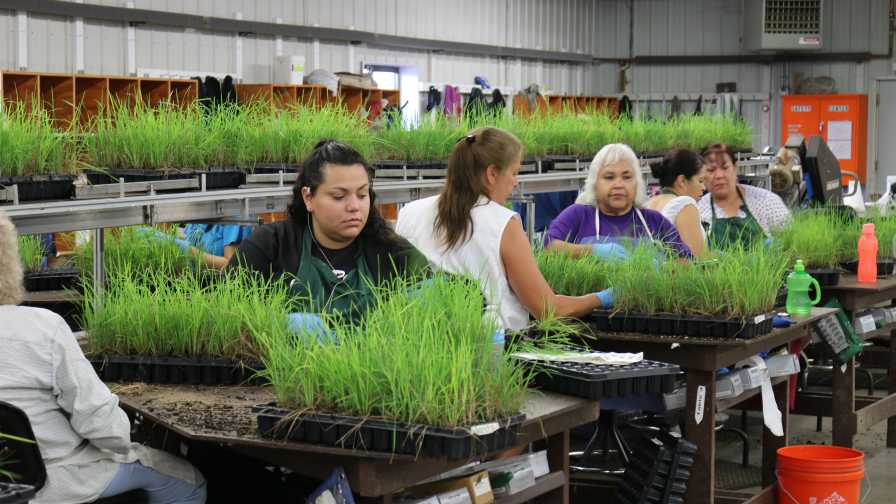USDA Labor Survey Reveals Clouds on the Horticulture Labor Horizon

When it comes to the labor market and horticulture, it’s a classic bad news/good news story. The good news? Most greenhouse growers struggling with the especially difficult labor market do have access to the H-2A visa program. So, it’s no surprise that growth in H-2A use among greenhouse and nursery growers continues at a torrid pace. As growers continue to try everything they can to recruit domestically, and to leverage mechanization and automation where possible, it’s good to have a visa program safety net (even if it is costly and complicated).
The bad news comes in several forms. For instance, in recent years we have seen an uptick in the Department of Labor (DOL) challenging greenhouses’ seasonal need for workers. The statute which authorizes the H-2A program speaks to workers coming “on a temporary basis” to perform agricultural work or services “of a temporary or seasonal nature.” The DOL through regulation interprets the statute as requiring that the underlying job opportunity must be seasonal, which DOL says means less than 10 months. So, the DOL is rather regularly questioning whether the actual job is seasonal, or “could be” performed year-round. (They sometimes argue the point on technical grounds, as in, “you could grow poinsettias year-round” even though there’s approximately zero market demand for them outside of the holiday season.).
This is notably a growing challenge in greenhouse production and in nurseries in warmer climates, prompting one major third-party agent serving many clients in the industry to coin the phrase “disfavored industry” based on recent patterns of bureaucratic questioning and interference. In the past, AmericanHort has often been able to advise and assist members facing such challenges. With program use growing rapidly, we expect this issue to rear its head more regularly going forward.
As for the horizon, we are bracing for a significant 2023 increase in the so-called “adverse effect wage rate,” or AEWR. This should come as little surprise, given the difficult labor market and inflationary pressures across so much of the economy as we emerge from the disruptions of the COVID-19 pandemic. But it will come on top of what is already a very high-cost program.
We now have our first glimpse into where H-2A wages are trending. On May 25, the USDA released the first two quarters’ results of its Farm Labor Survey, which informs DOL’s AEWR methodology specifying that the regional “average wage, field and livestock workers, combined” shall be necessary to avoid the employment of H-2A workers having an “adverse effect” on similarly situated U.S. workers. Under this methodology, the “average wage” typically sets the minimum wage, and next year’s average wage becomes the new minimum wage the following year.
So how are the data coming in? In the first quarter of 2022, the national average wage was up almost 9% from the same period in 2021. And it was up 8% in Q2. If the pattern holds through the last two quarters, then we are probably looking at a roughly 8% increase nationally for 2023.
As usual, though, not all regions are seeing the same patterns. So far, the region that includes Kentucky, Tennessee, and West Virginia is in the best spot, with both quarters coming in at less than 2% above last year. At the other end of the spectrum are Iowa and Missouri, with increases at about 14% and 13%, respectively. It appears that at least 13 states had double-digit increases in each quarter.
Moreover, we are bracing for new wage regulations by year’s end that may make it considerably more expensive to have H-2A workers drive trucks, do construction tasks, and perhaps other specialized tasks. These changes were first proposed in July 2019 (during the Trump administration) and seem headed to finalization now.
Is there any hope for relief? Certainly, the best way to lasting relief would be legislation. The Farm Workforce Modernization Act, which passed the House of Representatives in March 2021, would freeze the AEWRs for one year, and implement caps on annual wage increases going forward. For most, this would mean a maximum annual increase of no more than 3.25%. Negotiations on a Senate version are underway, led by Sens. Mike Crapo (R-ID) and Michael Bennet (D-CO). There’s no better time than now to urge your Senators to lend their support to this effort.
AmericanHort members can stay up-to-date on our work in Washington around labor reform and other important industry concerns through our bi-weekly Impact Washington Newsletter. Not an AmericanHort member? Join us today at AmericanHort.org/Join.









